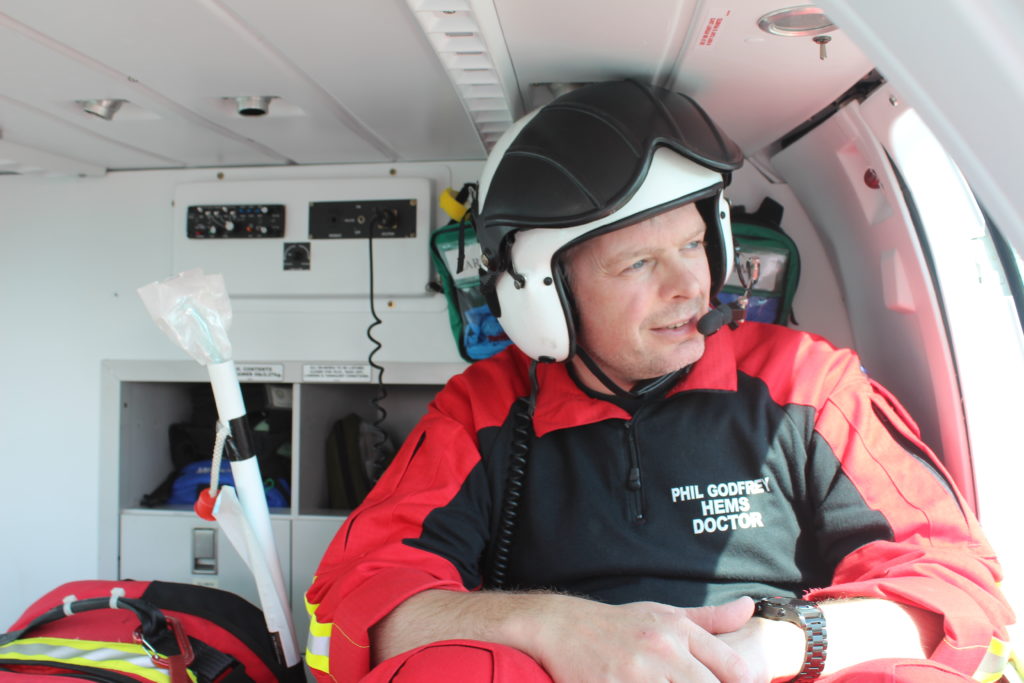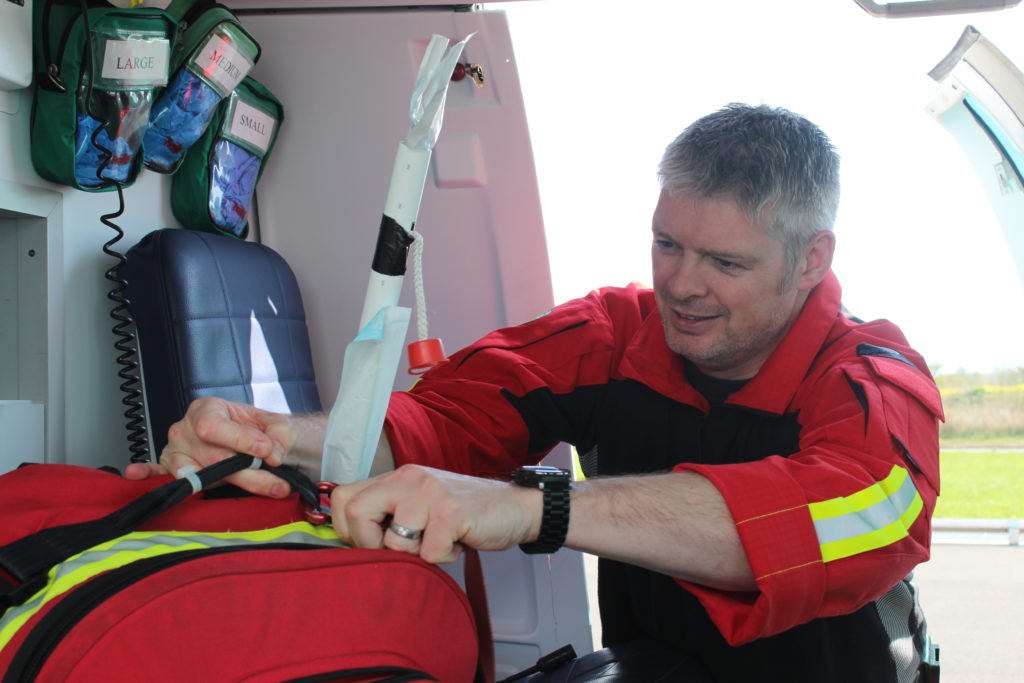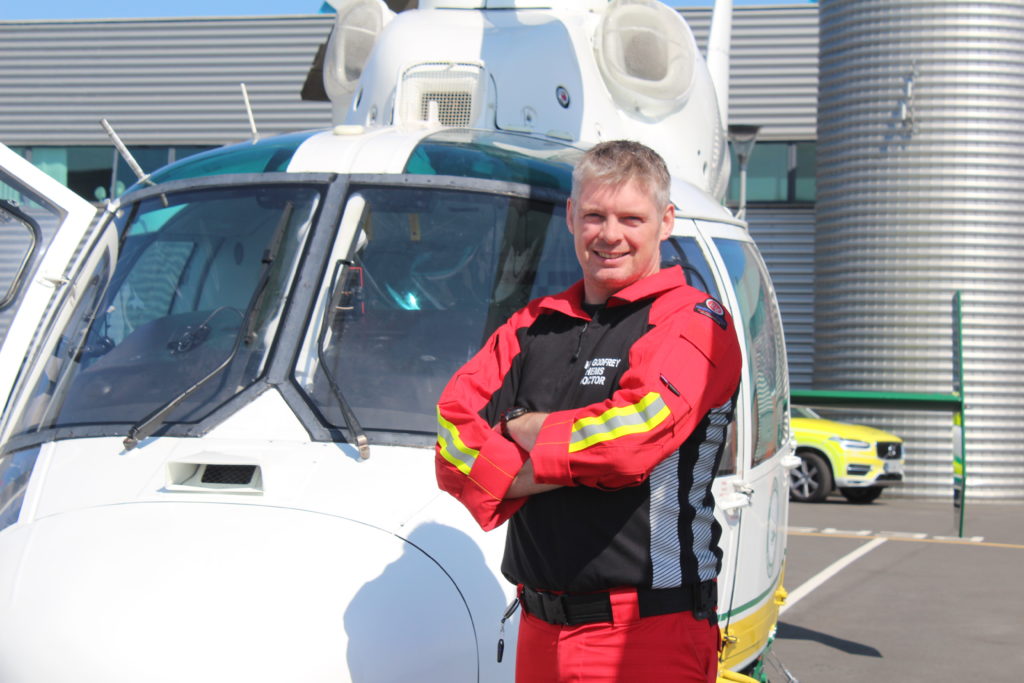The Great North Air Ambulance Service (GNAAS) was one of the first air ambulances in the country to carry doctors onboard its aircraft.
Doctors enable a range of treatments and drug interventions that elevate the service from just a means of patient transport to a flying critical care unit capable of carrying out surgeries and blood transfusions on the roadside. But the job of an Air Ambulance Doctor is not for everyone.
“When you are out there, you don’t have that warmth and cosiness or the option of being able to call upon back-up that you have in a hospital,” said Phil Godfrey, GNAAS doctor of 13 years.
Phil is one of 35 doctors on the books of the Great North Air Ambulance Service. The doctors come from a wide range of backgrounds, but most, like Phil, are consultants in hospitals across the region. Some are also active military doctors who work with GNAAS when not on service.


Doctors are recruited by GNAAS through two routes – a national training scheme and a locally organised equivalent (see below for more details) and undergo rigorous interviews, exams and real-life scenarios with the charity.
In order for the charity to keep developing the level of care it offers, it needs to keep recruiting specialist doctors who have an interest in pushing the established boundaries of Pre-hospital Emergency Care (PHEM).
However, candidates must demonstrate more than just an interest in PHEM. They must display the core characteristics required to thrive in the role.
Phil, who also works at James Cook University Hospital in Middlesbrough, said: “We also look for their ability and understanding of what’s known as human factors – the complex relationship between human beings and the systems they work in.
“This includes non-technical skills such as situational awareness, leadership, communication and teamwork.
“It’s difficult to identify these attributes in a person through the recruitment process, but we do our best to create assessments that allow us to observe how candidates react to stressful scenarios. It would be easy to deal with the chaos of a scene by shutting off from it. In reality, we can’t afford to do that.”


Depending on the route the doctor took to join GNAAS, they are then subjected to a prolonged period of supervision, with a mentor providing support and mentorship along the way.
The process has changed “massively” since Phil started as an air ambulance doctor in July 2006.
On his very first supervised shift, he found himself in the position of having to put a patient into an induced coma through an advanced procedure known as a rapid sequence induction (RSI). As he was the only doctor present, he performed the RSI himself. It was a success, but he said that story demonstrated just how far the training and supervision process has developed since.
“It’s unrecognisable from my early days,” he said. “When I first started, you had two or three supervised shifts before getting the thumbs up.
“It seemed alright at the time, but when you compare it to the level of supervision that goes on now, it’s completely different. That’s also reflected in the general level of care that we deliver.”
These days, doctors would always be supervised by more experienced doctors. This increased support allows them to build up their pre-hospital experience more gradually. The process is as much about looking after the trainee doctor as any patient they encounter.
Although trainees come armed with significant skills and experience, they often encounter patients in the moments after the onset of their injury or illness. They are often thrown into chaotic scenes. Occasionally, these scenes are dangerous places to be.
“We are always looking out for each other,” says Phil.
“And we make time to check in with new doctors who might be struggling in the hours, days and weeks after a difficult job. So far, we haven’t had any serious issues, but we need to remain alert on that front.”
To anyone considering pursuing this as a career route, Phil offered his encouragement. “It’s a brilliant and rewarding job,” he said.
“But I would also warn them though that it’s not just like you see on television. There are lots of other jobs that need doing aside from flying on missions.
“We train, teach, audit, research, check and manage stock levels and equipment, and then there’s the toilets to clean. Coming out of a hospital, you might be a bit removed from all that, you might get some of it done for you, but here we are one small team and we have to all pitch in.”


There are two entry points into being an air ambulance doctor with the Great North Air Ambulance Service:
Pre-hospital Emergency Medicine (PHEM) trainee scheme
This national programme has become the main entry point over the past few years. It is open to doctors who have a base speciality in either anaesthetics or emergency medicine. It is run by the Intercollegiate Board for Training in Pre-hospital Emergency Medicine (IBTPHEM) and allocates successful applicants to participating air ambulances throughout the UK. GNAAS offers these placements over two years with an initial sign-off to work solo after six to ten months. During this time, the participant spends 50% of their time with the air ambulance and 50% focusing on their base speciality. The curriculum is developed on a national level. Upon successful completion, participants are given an accredited subspecialty in PHEM.
As well as offering placements, GNAAS has also recruited doctors who have successfully completed the PHEM scheme with other air ambulances.
Flexible training opportunity
This route runs similarly to an apprenticeship. Rather than being orchestrated on a national level, however, GNAAS recruits locally through interviews and assessment days, again looking for candidates with a background in anaesthetics or emergency medicine. Successful candidates are subjected to the same rigorous blend of on-the-job training, supervision and assessments when at work. This process commonly lasts between six months to a year before the doctor is signed off to work solo.



